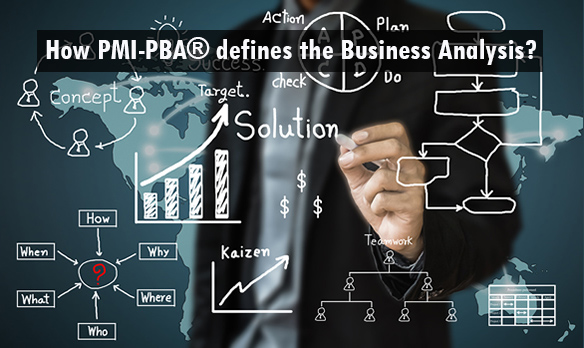

In my last PMI-PBA® program doubt clarification session, we had a good discussion on what is Business Analysis and why project managers, product owners, system analyst, quality analyst need business analysis skills? I facilitated the discussion where the conversation turned to go deep in various business analysis activities from project initiation to closure.
The discussion ended with an understanding that business analysis is a skill set which you used in evaluating the business value of a solution, planning the solution activities, analyzing the solution requirements, monitoring if the solution is on track to deliver the business benefits and finally in evaluating if the solution met the Business Need. In PMI-PBA® certification, these are the broader activities and comes in the Business Analysis.
Now the answer to next question who performs these activities? – According to Business Analysis for Practitioners: A Practice Guide , these activities are assigned to the resources which have business subject matter expertise. The Business Analyst is one who performs these Business Analysis activities regardless of their title is a Business Analyst. You may or may not have Business Analyst assigned to your projects. Anyone in your project doing these business analysis activities, actually taking part in the Business Analysis. Roles like Project Managers, Business Analysis, System Analyst, Product Owner, Product Manager, Portfolio Managers, Quality Analyst needs Business Analysis skills.
Let’s have a closer look at Business Analysis tasks mentioned in PMI-PBA® content outline associated with each PMI-PBA® domain:
Need Assessment:
Planning:
Analysis:
Traceability and Monitoring:
Evaluation:
Check yourself – If you are involved any of these tasks, you are involved in business analysis irrespective your formal designation. Business Analysis gives you mastery in working with business stakeholders and are critical to the success of the project. Business Analysis skills makes you more marketable especially when you are a contributor in any of above Business Analysis activities. During past two years, we can clearly see that request for effective business analysis is growing especially for the PMI-PBA® certificate.
You can answer the demand by becoming professional business analyst (PMI-PBA®) certified. To fulfil the need iZenBridge had launched the online course and it is getting huge worldwide success. We have tried to make our product best value for money. iZenBridge follows a unique way of learning where the course is not just for getting 35 PDUs certificate; it is a complete association with iZenBridge to earn your certificate.
I hope you got the introduction of PMI-PBA® certification business analysis and how the iZenBridge online course can assist you to get the certificate. please refer following link for more details: https://www.izenbridge.com/project-management/pmi-pba-certification-training
I hope this post helped you in knowing how PMI-PBA® certification defines Business Analysis, you may refer following video to explore more:
Enroll to our FREE PMI-PBA® Introductory Program to learn more about PMI-PBA® certification
No Trainings found